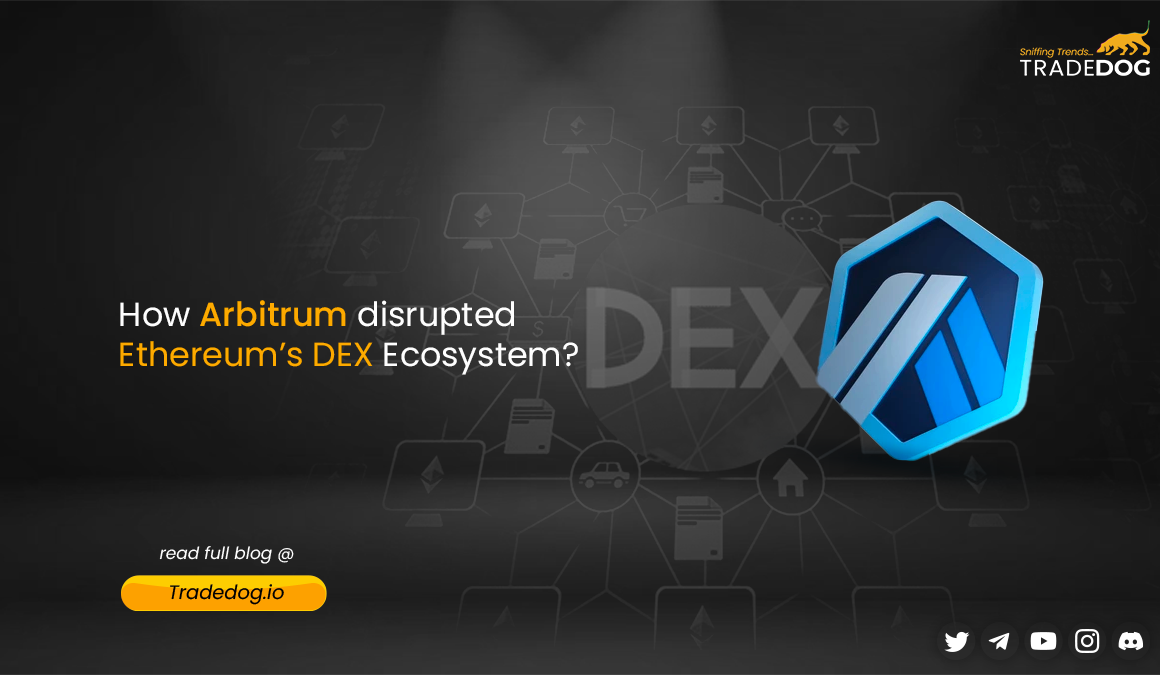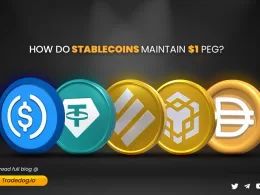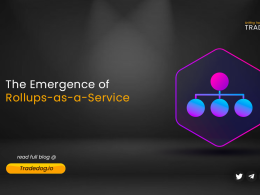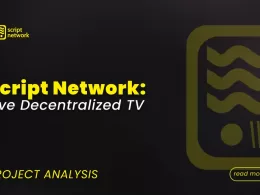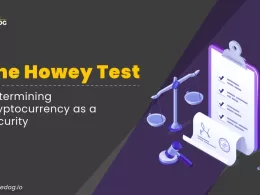Quick Links
In the ever-evolving landscape of blockchain and cryptocurrency, one of the most significant developments in recent times has been the rise of Arbitrum and its impact on Ethereum’s decentralized exchange (DEX) ecosystem. This blog delves into the intricacies of Arbitrum’s Layer 2 scaling solution, examining how its technological advancements have not only addressed Ethereum’s scalability challenges but also led to a paradigm shift in DEX activity.
Understanding Arbitrum’s Layer 2 Scaling Solution
Arbitrum is, at its heart, a pioneering Layer 2 scaling solution with the primary goal of tackling the issues that Ethereum’s Layer 1, or main blockchain, faces. Ethereum, while revolutionary in its concept, has grappled with network congestion and excessively high transaction fees, which have hindered its scalability and accessibility.
Arbitrum steps in to tackle these issues head-on. It does so by leveraging advanced roll-up technology, a novel approach that involves conducting transaction processing off the main Ethereum chain. By offloading much of the transaction burden onto its Layer 2 infrastructure, Arbitrum significantly reduces congestion and transaction costs on Ethereum’s Layer 1, making it a more viable and efficient platform for users and developers alike.
Importantly, Arbitrum accomplishes this without compromising the essential principles of security and decentralization that Ethereum is renowned for, ensuring a seamless transition to a more scalable and cost-effective blockchain ecosystem.
The Role of Roll-Up Technology
Optimistic rollup technology is what Arbitrum is based on. It is a unique and original rollup technology that is a key part of making transactions in the Ethereum ecosystem faster and cheaper. Optimistic Rollups are based on the idea that transaction confirmation should be done with optimism. Optimistic Rollups don’t run and check every transaction on the Ethereum mainnet right away. Instead, they believe that all transactions are valid by default. This assumption greatly lowers the amount of work that needs to be done on computers and resources on the mainnet because it skips over the need for lengthy and resource-intensive calculations during transaction processing.
(Image source: https://medium.com/)
The critical advantage of this approach lies in its efficiency. By presuming transaction validity, Optimistic Rollups can process a significantly higher number of transactions off-chain or on Layer 2, which is where Arbitrum operates. These transactions occur at a much lower cost and with faster confirmation times compared to executing them directly on the Ethereum mainnet.
The Surge in DEX Activity on Arbitrum
The introduction of Arbitrum has had a profound impact on the DEX ecosystem within Ethereum. DEXs, which operate without a central authority and allow for direct peer-to-peer cryptocurrency trades, were often hindered by Ethereum’s scalability issues. With the advent of Arbitrum, these exchanges have seen a remarkable increase in activity.
- Daily and Weekly Trading Volumes: Arbitrum’s daily DEX volume recently reached $1.834 billion as of January 4, 2024, surpassing Ethereum’s volume of $1.444 billion as of January 4, 2024. This growth is not just limited to daily figures; over a week, Arbitrum’s DEX volume hit an impressive $6.804 billion, highlighting a robust trading activity on the protocol.
- Total Value Locked (TVL): In the realm of TVL in DEXs, Arbitrum has accounted for $2.486 billion, which constitutes 4.55% of the total TVL. In comparison, Ethereum’s TVL stands at $29.85 billion, making up 54.6% of the total. This substantial portion of TVL in Arbitrum demonstrates its growing importance in the decentralized trading space.
- Market Capitalization and Revenue: The market capitalization of Arbitrum (in circulation) has increased by 83.84% to $2.56 billion. Additionally, the revenue generated by Arbitrum over the past 30 days witnessed a remarkable growth of 79.82%, reaching $11.66 million. When considering the fully diluted market capitalization, Arbitrum has seen an 83.84% rise, reaching $20.07 billion. These figures, especially the annualized revenue boost of 101.67% to $141.81 million, underscore the protocol’s sustained growth and its increasing capture of transactional fees within its ecosystem.
- Network Activity: Arbitrum’s daily transactions per second stood at 14.05, compared to Ethereum’s 12.92. This high network activity aligns with an increase in social media mentions related to ARB, Arbitrum’s native token, suggesting growing interest in the platform.
- Ecosystem Growth and Developer Support: The Arbitrum ecosystem has seen considerable growth, with various DEXs contributing to this expansion. For example, Camelot DEX on Arbitrum has a total value locked (TVL) of $96.31 million and generated $2.43 million in fees in March. Zyberswap has $21.4 million locked in, Uniswap has a TVL of $287.652 million on Arbitrum, and Sushiswap has a TVL of $149.94 million. This thriving ecosystem fosters innovation and collaboration, simplifying the process for developers to build and deploy DEXs.
Factors Contributing to Arbitrum’s Success
The success of Arbitrum in enhancing Ethereum’s decentralized exchange (DEX) ecosystem is a result of a combination of innovative technology, a user and developer-friendly platform, and a strong community and ecosystem.
- Innovative Technology (Optimistic Rollups): A key driver of Arbitrum’s success is its use of Optimistic Rollups. This technology represents a significant advancement in blockchain scalability, addressing one of the major limitations of the Ethereum network – high gas fees and limited throughput. Optimistic Rollups work by executing transactions off the main Ethereum chain (off-chain) and then posting the data back to the main chain. This approach greatly reduces the strain on the Ethereum network, allowing for more transactions at a lower cost. The efficiency and scalability offered by this technology make it particularly appealing for DEXs operating within the Ethereum ecosystem.
- User and Developer (Friendly Platform): Arbitrum stands out due to its emphasis on creating a user and developer-friendly platform. For users, the transition to using Arbitrum-based applications is relatively seamless, as it supports all Ethereum tools and infrastructure, including popular wallets like MetaMask. This ease of use encourages broader adoption among regular users. For developers, Arbitrum provides compatibility with Ethereum’s Solidity programming language and its tools, minimizing the learning curve and development effort required to migrate or create new applications. This developer-friendly environment accelerates innovation and the deployment of new applications on the platform.
- Strong Community and Ecosystem: The growth and adoption of Arbitrum are also propelled by its strong community and ecosystem. The platform has fostered a robust community of users, developers, and enthusiasts who are actively involved in its development and promotion. The community support is evident in the diverse range of decentralized applications (dApps), including DEXs, developed on Arbitrum. Furthermore, the ecosystem benefits from the network effects of these applications, as each new application adds value to the platform, attracting more users and developers. This vibrant community and ecosystem create a feedback loop that drives continuous growth and innovation.
Conclusion
In conclusion, Arbitrum’s Layer 2 scaling solution, powered by Optimistic Rollups technology, has ushered in a new era for Ethereum’s decentralized exchange (DEX) ecosystem. By addressing Ethereum’s scalability challenges and significantly reducing transaction costs and times, Arbitrum has become a magnet for both users and developers. Its innovative technology, user-friendly platform, and strong community support have propelled its success, resulting in a surge in DEX activity and making it a promising player in the evolving world of blockchain and cryptocurrency.





